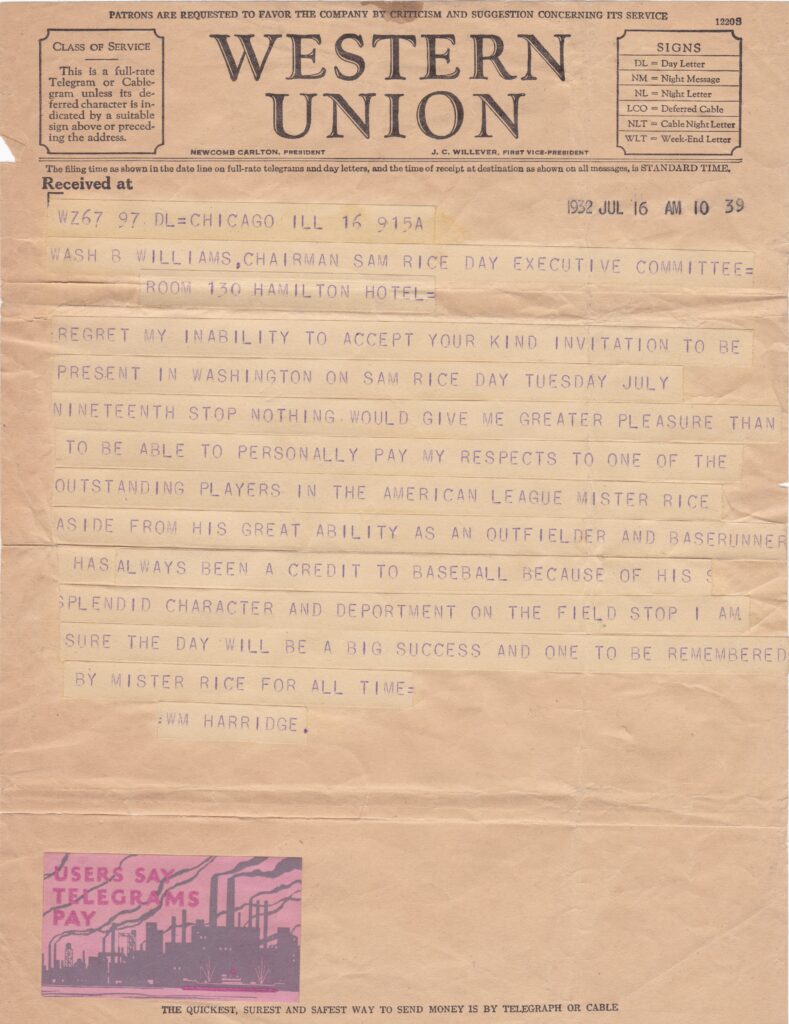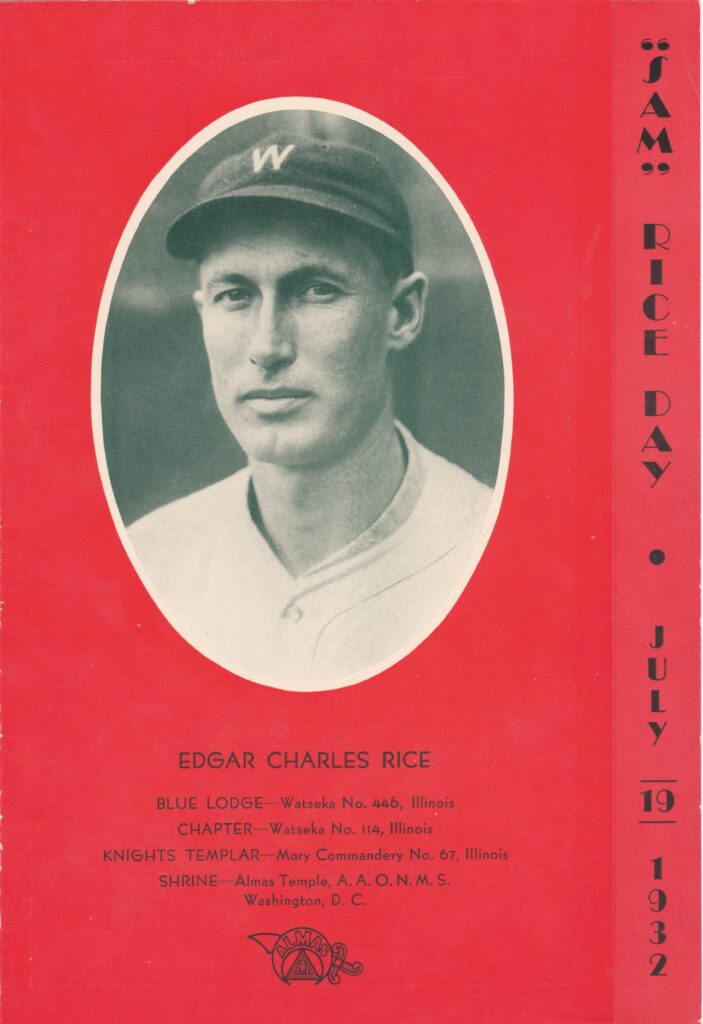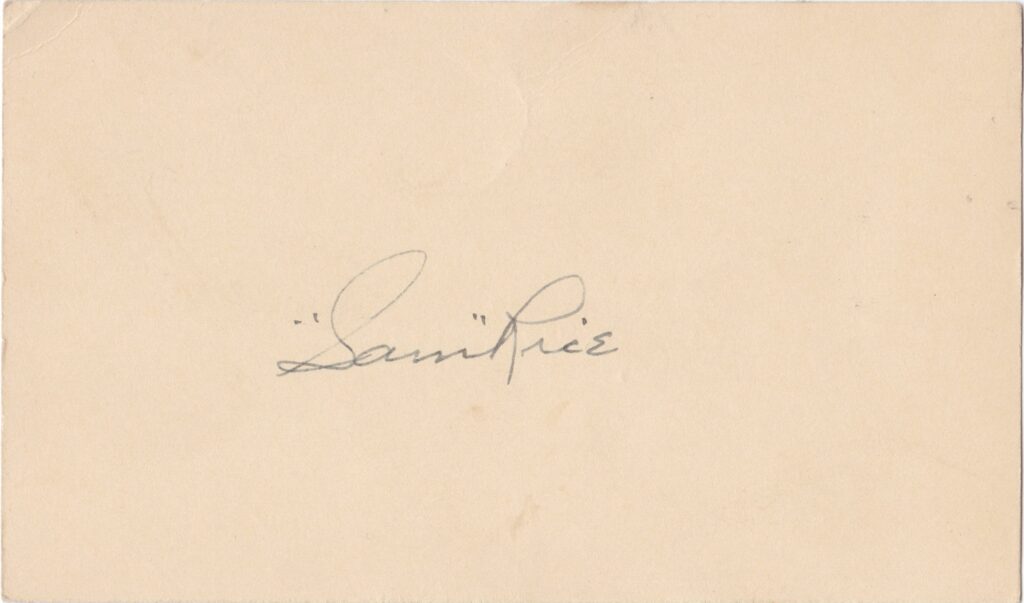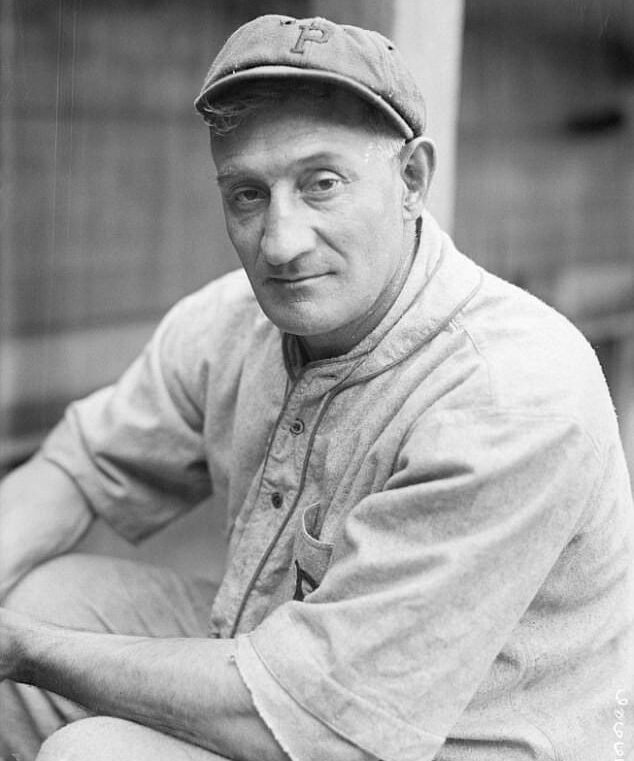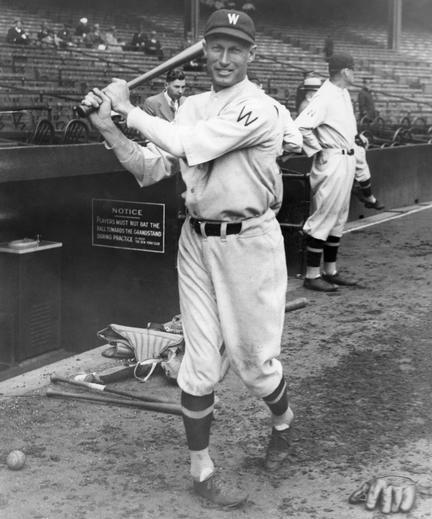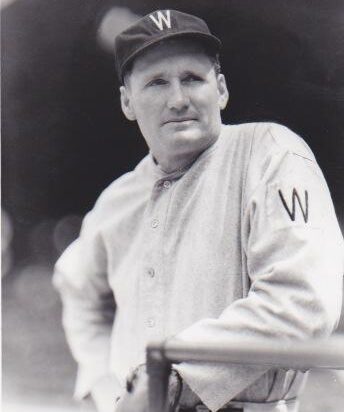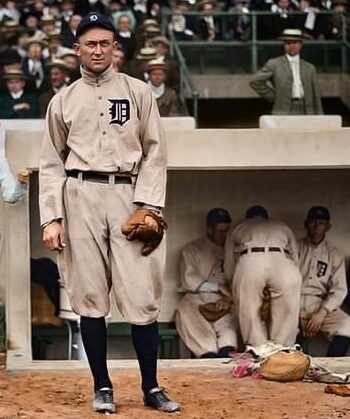Military service in WWI deprived Sam Rice of the 13 hits he needed for 3,000
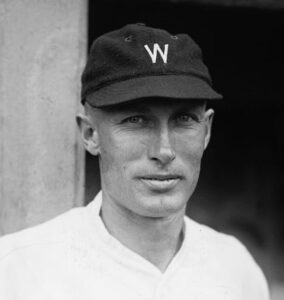
An early star for the Washington Senators
Hall of Fame outfielder Sam Rice was the first offensive star of the Washington Senators. A right fielder by trade, Rice broke in during the Senators 15th year of existence. He soon helped change the fortune of the franchise.
Rice debuted in 1915 and became the everyday right fielder in 1917 when he hit .302 and tallied 177 hits. In 1918 Rice was recalled to the army in the final year of World War I. Initially stationed in New York with the 58th Coast Artillery Regiment in New York, Rice joined the Senators for 7 games while on furlough and hit .348.
In September his regiment was sent to France. Before Rice and his mates saw combat, the armistice was signed.
When he returned to the game in ’19, Rice recorded 179 hits. That began a 12-year run in which hit .327 with 2,396 hits – almost 200 per season.
First in war first in peace and last in the American League – until Rice came
Charter members of the upstart 8-team American League in 1901, the Washington Senators finished 6th, 7th, or last in each of their first 11 years. Rice helped change that.
In his nearly two-decade run with the team, Rice helped keep the Senators out of the the AL basement. In fact, in 13 of his 19 seasons with the team, Washington finished in the first division.
The pinnacle of the Senators 60-year existence came in 1924. That season Rice hit .334 and led the league with 216 hits. Walter Johnson paced the AL in wins (23), ERA (2.72) and strikeouts (158) to win pitching’s Triple Crown. Together they pushed the Senators to their first World Series. Once there, Washington bested John McGraw’s New York Giants in a 7-game thriller.
Before Rice left Washington, he helped the Senators return to the World Series in 1925, and 1933. The three AL pennants and 1924 title are the only postseason appearances in Senators history.
High atop the franchise leaderboard yet largely forgotten
The Senators stayed in Washington through 1960 before relocating to Minnesota and becoming the Twins. Rice still has the most hits, doubles, triples, and runs for the franchise that has existed since 1901. He remains in the top-5 in WAR, batting average, and runs batted in.
When Rice left baseball in 1934 he had 2,987 hits. In a game where fans and historians are preoccupied with milestone numbers, Rice finished 13 hits shy of one of baseball’s most cherished marks.
Two years after he last played a big league game, Senators owner Clark Griffith offered a contract to the 46-year old Rice a comeback in a bid to get to 3,000 hits. Rice declined.
“…I was out of shape, and didn’t want to go through all that would have been necessary to make the effort,” Rice explained. “Nowadays, with radio and television announcers spouting records every time a player comes to bat, I would have known about my hits and probably would have stayed to make 3,000 of them.”
The underappreciated Senators star deserved better
Before Rice, the 3,000-hit club had only six members – Cap Anson, Honus Wagner, Nap Lajoie, Ty Cobb, Tris Speaker, and Eddie Collins. Each man had their ticket to Cooperstown punched by the writers in the 1930s.
Rice took a different path.
He received just 8 votes in all his years on the scribes’ ballot and waited until 1963 for the Veterans Committee to open the doors to the Hall.
Memory of Rice’s career has dimmed. The Senators played their last game in Washington more than 60 years ago and the number of fans who remember the club are dwindling. Today there’s little mention of franchise legend Rice in the Minnesota Twins orbit or anywhere else in the baseball world.
None of that seems right.
What if Rice had reached the 3,000-hit milestone? What if the Senators stayed in Washington and their fan base remained intact?
While the answers to those questions can never be known, this much is certain: Sam Rice deserved better.
Reach Jim Smiley, the author of this story at [email protected]
Be sure to check out CooperstownExpert.com, the internet’s leading website for the display of museum-quality baseball autographs.
